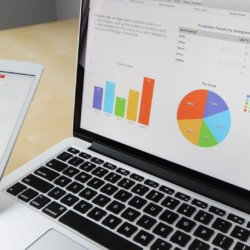Tax time can be one of the most stressful times of the year. This is true when you are involved in the chore of gathering everything together and slogging through preparing your individual income taxes. It rings even more true when you, as the owner of a small business face the complicated task of filing federal income taxes for small businesses. The process can be time-consuming and seem endlessly complicated. However, it doesn’t have to be. Please see our Coronavirus blog post for the latest information on COVID-19 crisis management tips and loan resources for small businesses.
New Small Business? 4 Things to Know About Filing and Paying Your Business Taxes
Tax time comes every year and, when that time comes, you don’t have to be stuck in on a specific method for doing them. You need to begin with the legal identity of your business when doing tax preparation and planning for SMBs. Is your small business classified as a sole proprietorship? Have you set up your business as a corporation or an LLC? It makes a difference when filing small business taxes. Each of those types of legal entities has a different tax for that you will use. You need to use the correct form for your business when reporting the income and expenses for your business. However, while the forms may be different, the process of calculating the taxable income for your business tax return does not vary that much. In this article we will look at that process and what you need to do at each step along the way.
The first is something of an obvious one. You have to go and get all the information that you need for your small business tax return. Hopefully, you have been keeping proper records of everything using programs like QuickBooks throughout the year so it will be easy to access the records you need! Before you begin, you need complete records of business earning and expenses right in front of you.
Again, it is highly advisable to keep proper records throughout the year for your business. The process of filing federal income taxes for small businesses is so much easier when you keep track of the income and expenses for your business along the way. When you use a computer program or spreadsheet to organize your information it is easy to have everything you need at your fingertips come tax time. That level of an organization takes consistent effort throughout the year but also makes figuring out the income and deductions for your small business much easier when tax time arrives.
Once you’ve got all your information together, the next step is to figure out the right IRS tax form to use when filing federal income taxes for small businesses. As the saying goes, the only sure things in life are death & taxes. You will always have to report the income for your business to the IRS and pay taxes on that income, but the form will use to do that depends on how your business is classified.
Let’s start with small businesses that are run as a sole proprietorship. When filing small business taxes for a sole proprietorship you can report all your business income and expenses on a Schedule C attachment to your personal income tax return, so fairly easy. If your small business is classified as an LLC, and you are the sole proprietor, you can also file a Schedule C attachment to your personal income tax return. However, when your small business is classified as an LLC you can also elect to treat it as a corporation. If you do that, or if your small business is classified as a corporation, you will need to file a separate corporate tax return using Form 1120.
You’ve been keeping meticulous records all year. You’ve got your records organized and right in front of you. You know what form to use. The next step is (Duh!) fill out the form. Are using a Schedule C attachment for filing small business taxes you will be doing it alongside filling out your personal income taxes. You can find the schedule C form on the IRS website or use Turbo Tax to input the financial information for your business and generate Schedule C.
You will find that Schedule C is an easy and straightforward way of filing small business taxes. It is brief, just two pages long. It conveniently tells you what expenses you can claim. Once you finish filling it out you can simply subtract your expenses from your business earning to get your net profit or loss. That number is the one you use on your personal income tax form along with your other personal income tax items.
If your small business is classified as a corporation (or is classified as an LLC and treated as a corporation) then you will use Form 1120. For Form 1120 you will calculate the taxable income for your business in the same way as for Schedule C. However, Form 1120 is a bit more complex than Schedule C. It asks for some details that aren’t relevant to small business. It is also filed separately in your personal income tax form, so it isn’t as convenient.
You’ve filled out your form. The hard work is done. Now you just need to file your return. Be aware of the deadlines and don’t miss them when filing your small business tax return. If you are using a Schedule C form it is simply attached to your personal income tax form. You send it with you Form 1040 and the same deadline of April 15th applies. If you are using Form 1120 that is a bit different. Form 1120 must be filed by the 15th day of the fourth month following the close of the tax year. Most small businesses have a tax year that closes on December 31st. That means that the filing deadline is April 15th. If your business is classified as an S-Corp then Form 1120S must be filed by the 15th day of the third month following the close of the tax year. If the tax year for your business closes on December 31st then that would be March 15th. Also, this form is sent to the IRS separately from your personal income tax return.











